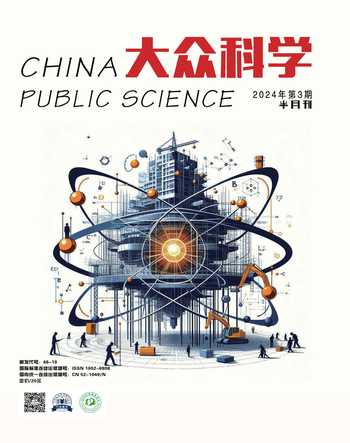光伏发电与风力发电的并网技术分析
赵青
摘 要: 由于现行技术在新能源发电并网中应用效果不佳,并网干扰谐波电流幅值较高,而且光电与风电转换效率比较低,无法达到预期的并网效果。因此,提出光伏发电与风力发电的并网技术分析。根据电子电路原理,建立光伏电池模型与风力发电模型,采用恒定电压法对光伏发电与风力发电最大输出功率跟踪控制,将光伏发电与风力发电输出经过逆变器调整电压后,并联于直流母线,实现光电与风电的并入电压。实验结果表明:设计技术应用下并网干扰谐波电流幅值在0.1 V以下,光电与风电转换效率在65%以上,在电力工程领域具有良好的应用前景。
关键词: 光伏发电 风力发电 并网技术 最大输出功率
中图分类号: TM73文献标识码: A文章编号: 1679-3567(2024)03-0011-03
Analysis of Grid-Connection Technology for Photovoltaic and Wind Power Generation
ZHAO Qing
POWERCHINA Northwest Engineering Co., Ltd., Xian, Shaanxi Province, 710065 China
Abstract: Due to the poor application effect of current technology in the grid connection of new energy power generation, the high amplitude of the harmonic current of grid-connected interference, and the relatively low con‐version efficiency between photovoltaic and wind power, the expected grid-connected effect cannot be achieved. Therefore, this paper proposes an analysis of grid-connection technology for photovoltaic and wind power genera‐tion. According to the principles of electronic circuits, this paper establishes photovoltaic cell models and wind power generation models, uses the constant voltage method to track and control the maximum output power of photovoltaic and wind power generation, and connects photovoltaic and wind power outputs in parallel to the DC bus after adjusting the voltage through the inverter, so as to achieve the merging voltage of photovoltaic and wind power. The experimental results indicate that, under the application of design technology, the amplitude of the har‐monic current of grid-connected interference is below 0.1V, and that the conversion efficiency between photovol‐taic and wind power is over 65%, which has good application prospects in the field of power engineering.
Key Words: Photovoltaic power generation; Wind power generation; Grid-connection technology; Maximum output power
随着全球能源结构转型的推进和应对气候变化的迫切需要,可再生能源发电在全球范围内得到了快速发展。其中,光伏发电和风力发电由于其清洁、可再生的特性,成为了当前及未来电力行业的重要发展方向。然而,这两种可再生能源发电方式都存在间歇性、波动性等特性,给电力系统的稳定运行带来了挑战。因此,如何实现光伏发电和风力发电的高效并网,确保电力系统的稳定运行,已成为当前及未来电力行业亟待解决的问题之一。并网技术是实现可再生能源发电高效利用的关键技术之一,其目的是将新能源发电系统与电网有机连接,确保电力系统的安全、稳定运行。在传统的电力系统设计中,并网技术主要考虑的是火电、水电等常规能源的发电方式,而对于可再生能源发电方式的并网技术,则需要根据其自身的特点进行专门的设计和研究。目前,国内外对于光伏发电和风力发电的并网技术已有一定的研究和实践,但仍然存在一些问题和挑战。例如:如何提高光伏发电和风力发电的并网效率,降低对大电网的冲击和影响;如何保证并网过程中的电能质量和稳定性;如何实现不同类型可再生能源发电的协同和互补等。针对以上问题,提出光伏发电与风力发电的并网技术分析。
1 光伏发电与风力发电的并网技术设计
1.1 建立光伏电池模型与风力发电模型


